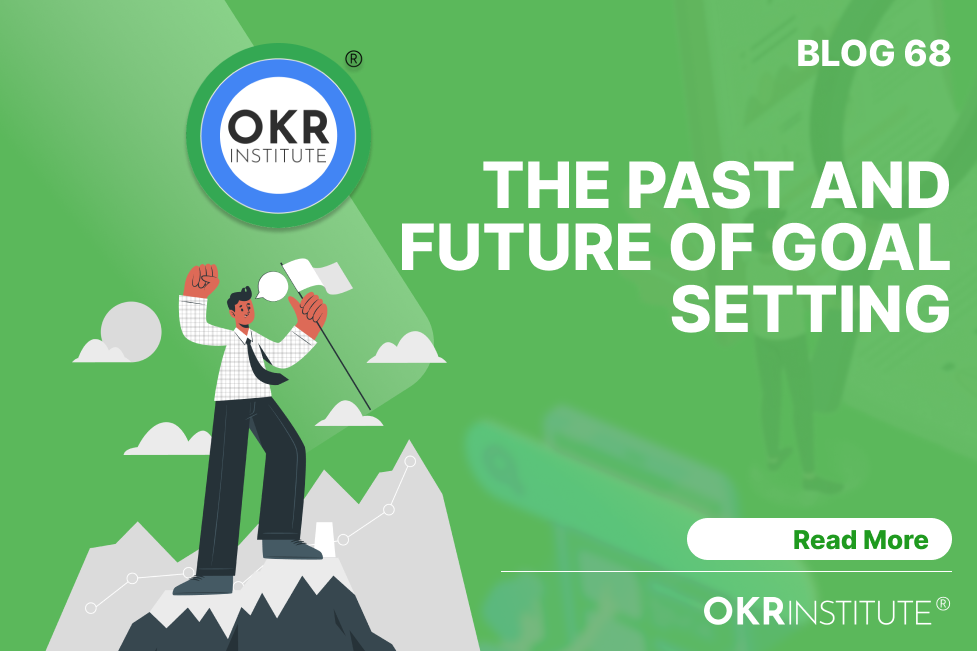How OKRs Revolutionize ESG Goal Achievement
How OKRs Revolutionize ESG Goal Achievement
Understanding OKRs and ESG Goals
Setting ESG Objectives
Establishing Key Results
Image courtesy of via Google Images
- Actionable: Key results should be actionable and within the control of the organization or team. They should describe tangible steps or outcomes that contribute to the achievement of the objectives. For example, a key result for improving social equity could be to launch mentoring programs for underprivileged youth in the community served by the organization.
- Measurable: Like objectives, key results should be measurable. They should provide specific metrics or indicators that indicate progress and success. This enables organizations to track performance and make data-driven decisions.
- Ambitious: Key results should be challenging yet achievable. They should push the organization to go beyond the status quo and drive substantial progress towards the ESG objectives. However, they should also be realistic and attainable with the available resources and capabilities.
- Aligned: Key results should be directly aligned with the corresponding ESG objectives. They should reflect the specific outcomes or milestones that contribute to achieving the objectives. Alignment ensures that efforts and resources are focused on the areas that matter the most for ESG outcomes.
By establishing actionable, measurable, ambitious, and aligned key results, organizations can create a clear roadmap for progress towards their ESG goals. The key results serve as signposts along the journey, indicating how far the organization has come and what still needs to be accomplished.
Aligning Teams
For effective ESG goal achievement, it is essential to align teams. OKRs provide a framework for aligning objectives from teams to organizational level, ensuring alignment throughout the entire organization.
Communication and transparency play a crucial role in this alignment process. Organizations should clearly communicate the ESG objectives and key results to each team and individual. They should also explain the relevance and contribution of each team’s work towards the overall ESG goals.
To successfully align OKRs for ESG goal achievement, organizations should follow these steps:
- Translate ESG objectives into team-level or department-level objectives that are directly aligned with the broader goals.
- Define key results for each team that contribute to achieving their respective objectives and, subsequently, the ESG objectives.
- Regularly communicate progress, share insights, and foster collaboration among teams to ensure alignment and cross-functional cooperation.
- Encourage ownership and accountability at all levels by providing teams and individuals with the autonomy and resources necessary to achieve their OKRs.
By aligning OKRs throughout the organization, organizations can ensure that all teams and individuals are working towards the collective ESG goals. This alignment fosters collaboration and synergies, enabling faster progress and enhanced impact.
Monitoring and Reviewing Progress
Regular monitoring and review of OKRs are essential to track progress towards ESG goals and drive accountability. Organizations should establish a systematic process for monitoring and reviewing OKRs, including the following steps:
- Check-ins: Regular check-ins provide an opportunity to assess progress, discuss challenges, and offer support. These check-ins can be conducted weekly or bi-weekly and can be in the form of team meetings or one-on-one conversations.
- Feedback: Providing and receiving feedback is crucial to improve performance and course-correct as needed. Feedback should focus on progress towards key results, identifying barriers or bottlenecks, and suggesting potential solutions or adjustments.
- Course Correction: Based on the progress and feedback, organizations should encourage proactive course correction when necessary. If certain key results are not being achieved as planned, changes in approaches, resources, or timelines may be required.
- Celebration and Learning: Celebrating milestones, achievements, and successes is important to maintain motivation and recognize efforts. Moreover, organizations should foster a culture of learning, encouraging reflections on successes, failures, and lessons learned along the way.
By implementing a structured monitoring and review process, organizations can ensure that progress towards ESG goals remains on track. It enables transparency, accountability, and adaptability to changing circumstances or evolving stakeholder expectations.
Conclusion
ESG goals have become increasingly important for organizations aiming to create sustainable and responsible businesses. To effectively achieve these goals, organizations can leverage the power of OKRs. By setting clear and measurable objectives, establishing actionable key results, aligning teams, and regularly monitoring progress, organizations can drive sustainable success and contribute to a better future.
Implementing OKRs for ESG goal achievement is not a one-time exercise but a continuous process of improvement and adaptation. As organizations prioritize their ESG mandates, integrating OKRs into their goal-setting framework is a key step towards achieving long-term sustainability and responsible business practices.
FAQs for “How OKRs Revolutionize ESG Goal Achievement”
What are OKRs and how do they support ESG goals?
OKRs (Objectives and Key Results) are a goal-setting framework that helps organizations define and track objectives and measurable results. They support ESG (Environmental, Social, and Governance) goals by providing a structured approach to align efforts and drive progress in sustainability and responsible business practices.
How do OKRs improve ESG goal attainment?
OKRs improve ESG goal attainment by setting clear, measurable objectives and key results. This focus and structure ensure that efforts are directed towards specific ESG outcomes, such as reducing emissions, improving social equity, and enhancing governance transparency.
Can you provide examples of ESG objectives and key results?
- Objective: Reduce carbon emissions.
- Key Result: Decrease greenhouse gas emissions by 30% within one year.
- Objective: Improve social equity.
- Key Result: Increase workforce diversity by 15% by year-end.
How can teams align with ESG goals using OKRs?
Teams can align with ESG goals by translating organizational ESG objectives into team-level OKRs, defining key results that contribute to these objectives, and regularly communicating progress to ensure alignment and collaboration.
What steps are needed to monitor ESG progress with OKRs?
- Regular check-ins: Weekly or bi-weekly meetings to assess progress.
- Feedback: Provide constructive feedback on key results.
- Course correction: Adjust approaches if key results are not met.
- Celebrate: Recognize achievements and learn from experiences.
Talent Development Director of the OKR Institute
Table of Contents
- Understanding OKRs and ESG Goals
- Setting ESG Objectives
- Establishing Key Results
- Aligning Teams and Cascading OKRs
- Monitoring and Reviewing Progress
- Conclusion
Related Courses
Recent Posts
Tags
#OKR
#OKR Coaching
#OKR Coach









